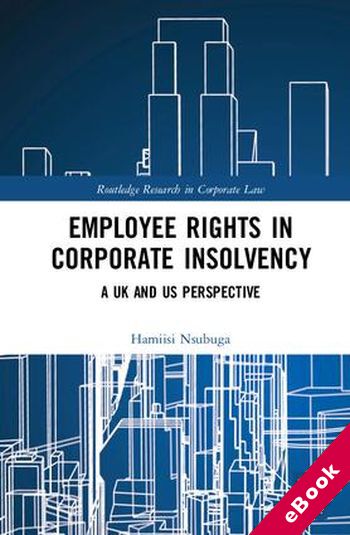
The device(s) you use to access the eBook content must be authorized with an Adobe ID before you download the product otherwise it will fail to register correctly.
For further information see https://www.wildy.com/ebook-formats
Once the order is confirmed an automated e-mail will be sent to you to allow you to download the eBook.
All eBooks are supplied firm sale and cannot be returned. If you believe there is a fault with your eBook then contact us on ebooks@wildy.com and we will help in resolving the issue. This does not affect your statutory rights.
This book analyses corporate rescue laws, processes and policies prescribed in corporate insolvency or bankruptcy laws, and employment laws of the United Kingdom and the United States, with a particular focus on how extant employee rights are treated when a debtor employer initiates corporate insolvency proceedings.
The commencement of formal insolvency proceedings by an employer affects employees’ rights and interests. Employment laws seek to protect employees’ rights and interests, while insolvency laws seek to promote corporate rescue, which may entail workforce changes. Consequently, this creates a tension between whose interest insolvency law should give primacy of protection.
The book analyses how corporate rescue processes such as administration, prepack business sales, company voluntary arrangements, receivership and liquidation impact employee rights and protection during corporate rescue proceedings in both jurisdictions. It goes on to address how the federal system of government in the US and the diffusion of power between federal – state law jurisdictions impact a uniform code of employee protection during Chapter 11 bankruptcy reorganisation proceedings.
The book considers how an interpretative approach to law (Dworkin’s Interpretative Theory of Law) may be used to balance both employee protection and corporate rescue laws during corporate insolvency in the UK and the US.
Of interest to academics, students and employment law practitioners, this book examines the tension between corporate rescue laws and employment protection laws during corporate insolvency in the US and the UK and how this tension may be remedied or balanced.